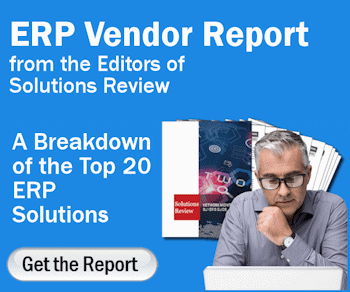The Top Three Signs Telling You It’s Time to Implement an ERP System


Growing a business is not easy – it takes hard work, a lot of time, dedication and focus. What makes it worse is outdated or unmanaged software systems that harm productivity and overall performance. Implementing a single system in which all employees have access to the information they need in order to get their work done can help improve efficiency, performance and profit to avoid this issue. In this case, an Enterprise Resource Planning (ERP) system can be the answer to all your problems. Here are some of the most common signs showing you may need to implement ERP software.
Widget not in any sidebars
You Lack Mobile Capabilities
In today’s digital era, mobility is a key feature for businesses to gain a competitive advantage, increase productivity and grow profits. According to a new NPR/Marist poll, 1 in 5 jobs in America is held by a worker under contract, making today’s workforce a mass of talent embracing freelance and remote work – more now than ever before. Because of this, you need a system that can be easily accessible to all your employees via a range of different devices.
An ERP system with mobile capabilities ensure employees who travel, or are under contract, that they will be provided with notifications, updates and have easy access to important information in real-time This ensures any decision-making will be made with the most relevant information.
Poor Accounting and Sales
If your accounting team keeps asking for more up-to-date figures, this should be the number one indicator telling you the company needs an ERP system. Irrelevant numbers slows down management, stunting growth and productivity. Another sign showing you may need an ERP solution is if you still conduct manual entry of paper-based invoices and sales orders. In today’s digitally advanced world, it seems like a silly and outdated practices of putting pen to paper. Having a software system that you can quickly enter information on saves valuable time and resources.
The same goes with sales, as everything flows better when real-time information is provided. If you find it difficult to visualize the ratio of inventory on hand to sales in hand, you’ll want to implement an ERP solution that can provide you with relevant information about inventory management and control of stock.
An ERP system can ensure that both sales and customer service can see the correct and up-to-date information to view the order or shipping status. This, in turn, provides a clear picture to the warehouse about inventory and stock.
Your System Integration Suffers or Doesn’t Exist at All
System integration provides an organization with the convenience of having a single workstation with all the relevant and important information/data needed to work efficiently. If you find difficulty consolidating information across systems and/or spreadsheets, this shows a lack of integration and it is another key indicator you need an ERP system.
As your business really begins to grow, having multiple applications can become an issues and slow down productivity. By centralizing all business operations in an ERP system (it links all your business applications and financials in a single database) you won’t have to worry about reconciling financials or having to assume sales forecasts.
Integration also ensures that all your systems communicate, allowing data to flow freely and be accessed by everyone in the company. With an ERP system in place, you can put all departments under one system to stop the silos of information and missing data. Connection is key.
Looking for more? Download our ERP Buyers Guide for free to compare the top-24 products available on the market with full page vendor profiles, key capabilities, an ERP software market overview, our bottom line analysis, and questions for prospective buyers.
And don’t forget to follow us on Twitter, Facebook and LinkedIn for all the latest in the ERP space!























